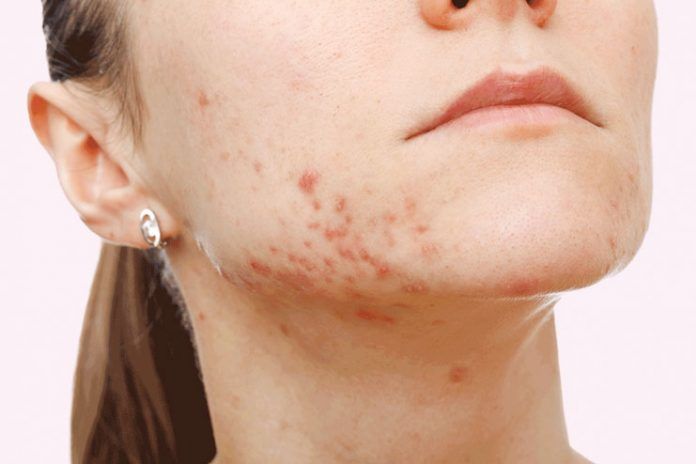Affiliate Disclaimer
Some links in this article are affiliate links. We may earn a small commission if you make a purchase through these links, at no extra cost to you. We only recommend products we find useful to our readersPimples and acne on the face are not quite welcoming. In fact, every time they show up, it is a cause of concern. At times, these pimples may end up as scars on the face, which are even more problematic. The concerns are even higher in case of cystic acne that forms pimples from inside the face skin and develop uncomfortable red bumps.
These bumps are painful and are usually stubborn. Unlike normal pimples, special care is required to treat and get rid of cystic acne. Read through this HealthSpectra post to learn in detail about causes, symptoms and natural ways of treating cystic acne. Be informed and stay healthy!
What Is Cystic Acne and What Are The Causes?
Cystic acne is the condition where the under-skin pimples are formed. They are painful and are tough to get rid of. The clogged pores filled with oil and dead inflamed skin slowly develops into cystic acne right when the pore ruptures and spills inflammation around the tissue. A cyst is then formed by the body to stop the further spread of the inflammation
These cystic pimples need special care, else scars can be formed. They may linger for weeks or a few months and can even turn hard. The main causes for the formation of the cystic acne are hormones and stress. They can be formed on any of the body parts like face, neck, back, hands, things, etc.
Excess androgen hormones over stimulate the sebaceous glands, thus producing excess of oils. The overproduced oil stucks in the pores and traps bacteria, which multiply and cause inflammation. Such hormonal changes are common during puberty, and days before and after the periods.
Types Of Cystic Acne:
Broadly cystic acne can be classified as nodules and cystic nodular acne. Nodules are generally larger than the other acne types like papules and pustules. They are very painful and solid as the bacteria and oil spreads deep inside the pores. They can also infect follicles. Gradually, they harden into deep cysts and leave scars.
Cystic nodular acne is the severe form of acne. They are hard, deep, painful, pus-filled and can cause permanent scarring. It is the most common type in young boys and men. Immediate dermatologist attention is needed in case of cystic nodular acne.
Symptoms of Cystic Acne:
The physical symptoms of the cystic acne are that they look like red, swollen bumps on the face and the pimples are formed beneath the skin. They are painful as they are inflamed and cause swelling in the adjacent nerve fibres.
Cystic acne can be identified if these are observed on the skin:
- large white bump
- Redness
- pus-filled cyst
- painful to the touch
Treatment for Cystic Acne:
Get away with cystic acne with simple treatment like taking your daily dose of multivitamins. Zinc reduces the inflammation of the skin and Vitamin E helps heal your skin. Talk to your doctor before consuming any multivitamins.
1. Warm Compress For Cystic Acne
Simply apply a warm compress on the affected area of the skin for 5 minutes, thrice a day. Or dab on creams or acne gels twice a day and leave. More importantly, do not pick at zits as it may lead to permanent scarring.
2. Cortisone For Cystic Acne
In case the situation is worsening day by day, see your doctor who may inject the pimple with cortisone. Cortisone is a steroid that reduces inflammation under the skin. It shrinks the swelling around the infection. With this injection, the cyst shrinks and less painful within 48 hours.
According to a board certified dermatologist at Schweiger Dermatology Group (1), Mara Weinstein, “Cortisone is a steroid that is injected directly into the cystic acne to calm the inflammation and help it resolve more quickly, thus minimizing the risk of scarring.”
The doctor may also suggest oral medications to treat more severe acne. Certain OTC antibiotics help kill infection-causing bacteria (2) like Doryx, Zithromax, and Bactrim. A strong oral medication like Accutane may decrease the oil production of the sebaceous glands (3).
3. Isolaz Treatment
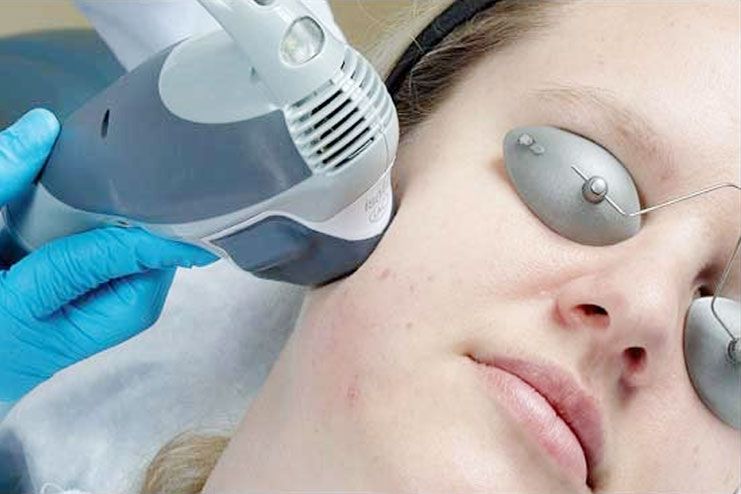

Isolaz treatment is done weekly or twice a month. This procedure can eliminate the potential side effects of the oral medications (4). This is an effective technique for inflamed cysts and blackheads too. The procedure involves suction with intense pulsed light to empty black pores.
4. Topical Antibiotics And Retinoids
Topical antibiotics and retinoids help relieve cystic acne (5). Topical creams, gels, and lotions contain antibiotics that help heal redness and inflammation. It should be a part of daily routine. Topical retinoids help clean clogged pores and regulate cell turnover. Cystic acne is responsive to prescription-strength formulas of Avage, Avita, Differin, Retin-A, and Tazorac.
5. Isotretinoin
Isotretinoin is the treatment prescribed in more severe cases of nodulocystic acne and patients with proven resistant for other treatments. It works by regulating the skin cell shedding in hair follicles and shrinking of enlarged oil glands (6).
Stop picking so as to avoid formation of the scars on the skin. Several treatments can help reduce the appearance of acne scars. However, first the focus should be on treating active acne and then to address the scars. Dermatologist may follow different methods like chemical peels, dermabrasion and laser resurfacing to remove the acne scars.
Diet for Cystic Acne:
Specific foods are to be avoided and included in the diet when suffering with cystic acne. Below is the list of foods to avoid and include in the cystic acne diet.
Foods to Avoid When With Cystic Acne:
- If suffering with lactose intolerant, avoid conventional dairy products as they are usually hard on the digestive system. Avoid cheese, milk, ice creams, etc. If you are not sure if dairy is the actual culprit, try eliminating dairy products for 2 weeks and see for the improvement in the cystic acne. If it is helping, stop dairy for some days and start reintroducing gradually after the condition subsides.
- Chocolates and caffeine products also contribute to cystic acne due to the caffeine content present in it. An overdose of caffeine is linked to hormonal imbalance. So avoid them until cystic acne clears up.
- Sugar is a high-glycemic food that enhances inflammation and worsens cystic acne. Do not consume excess grain and sugar products if you are already with skin acne. They show high negative effect on gut health and harms skin health.
- Avoid processed foods, fried foods and fast foods as they can flare-up current acne even worse. These foods are full of hydrogenated oils, chemicals, sodium, sugar and flavourings.
Foods to Consume When With Cystic Acne:
- Probiotic-rich foods are good for gut health, which promotes good bacteria.
- High zinc foods help people with acne as it supports digestive tract health and skin health. Zinc is abundant in cashews, pumpkin seeds, chickpeas, grass-fed beef, etc.
- Vitamin A rich foods like spinach, sweet potatoes, kale, and carrots can fight infection and speed up healing.
- High-fibre foods like fruits, vegetables, nuts, seeds, and oatmeal encourages colon cleansing and healthy bacteria in the gut.
- High-protein diet like organic chicken, grass-fed beef, fish, eggs, etc. help fight cystic acne.
- Liver-supportive foods like cauliflower, broccoli, leafy vegetables, apple, pears etc. help clear up acne.
Natural Remedies to Treat Cystic Acne:
Numerous simple yet effective remedies help cure cystic acne at home. Try any of these to get relief from those under skin red bumps.
- Apple Cider Vinegar for Cystic Acne
- Aloe Vera For Cystic Acne
- Baking Soda For Cystic Acne
- Banana Peel For Cystic Acne
- Garlic For Cystic Acne
- Ginger For Cystic Acne
- Green Tea Cystic Acne
- Turmeric for Cystic Acne
- Epsom Salt For Cystic Acne
- Potato For Cystic Acne
- Ice For Cystic Acne
- Lemon For Cystic Acne
- Benzoyl Peroxide For Cystic Acne
- Salicylic Acid For Cystic Acne
Facial Mask For Cystic Acne:
- Egg White Mask For Cystic Acne
- Clay Mask For Cystic Acne
- Honey Mask For Cystic Acne
- Aspirin Mask For Cystic Acne
Essential Oils For Cystic Acne:
- Tea Tree Oil For Cystic Acne
- Coconut Oil For Cystic Acne
- Castor Oil For Cystic Acne
- Clove Oil For Cystic Acne
- Grape Seed Oil For Cystic Acne
- Lavender Oil For Cystic Acne
- Neem Oil For Cystic Acne
1. Apple Cider Vinegar For Cystic Acne:
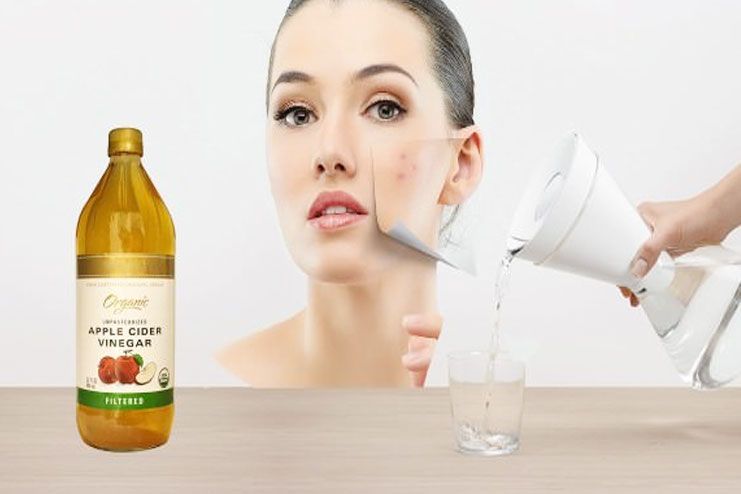

Apple cider vinegar is known to cleanse the skin and prevent bacterial growth. The nutrients present in it can nourish the skin, tightens and can keep it healthy.
How To Use:
- Mix 3 tbsp raw honey with 1 tbsp apple cider vinegar in a bowl.
- Massage a little mixture over the face and leave it for deep cleansing.
- Rinse thoroughly after 5 minutes.
2. Aloe Vera For Cystic Acne:
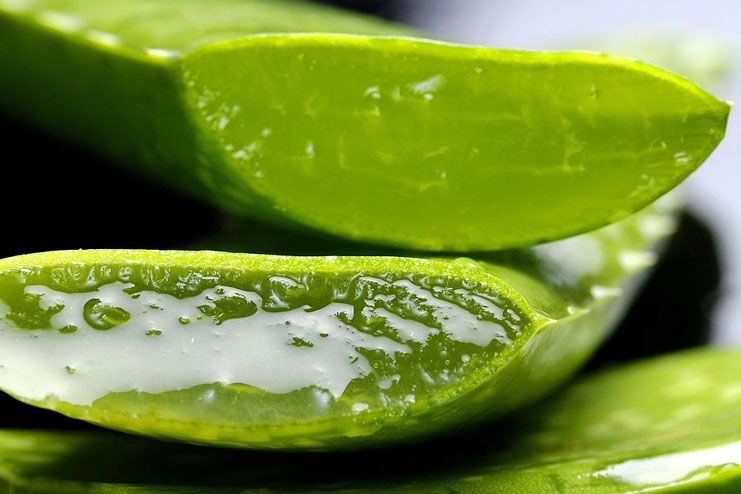
How To Use:
- Mix 2 tbsp aloe vera gel with some drops of lemon juice to form a mixture.
- Apply the paste on your neck and face. Leave it for an hour.
- Rinse off. Repeat twice a week.
3. Baking Soda For Cystic Acne:
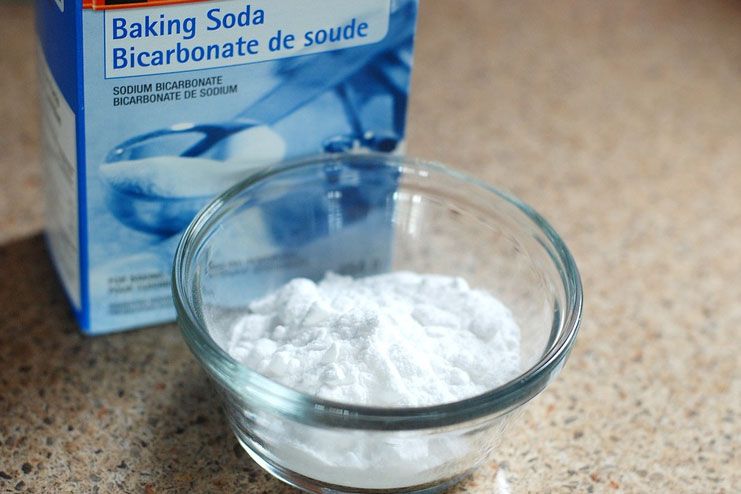
How To Use:
- Mix baking soda with a little water to make a paste and apply it on to the cyst.
- Leave it for 20 minutes and rinse off thoroughly.
- Dry gently and apply moisturizer to prevent dryness.
- Continue the process twice a week.
4. Banana Peel For Cystic Acne:
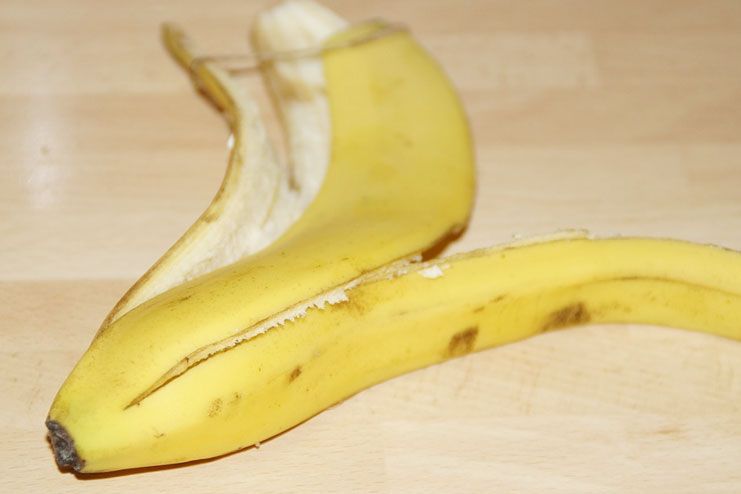
How To Use:
- Wash your face with cleanser and dry gently using a towel.
- Massage your face with banana peel for 10 minutes.
- Use a fresh piece, if it turns brown.
- Rinse thoroughly after 20 minutes.
Check here to know the more benefits of banana peel
5. Garlic For Cystic Acne:
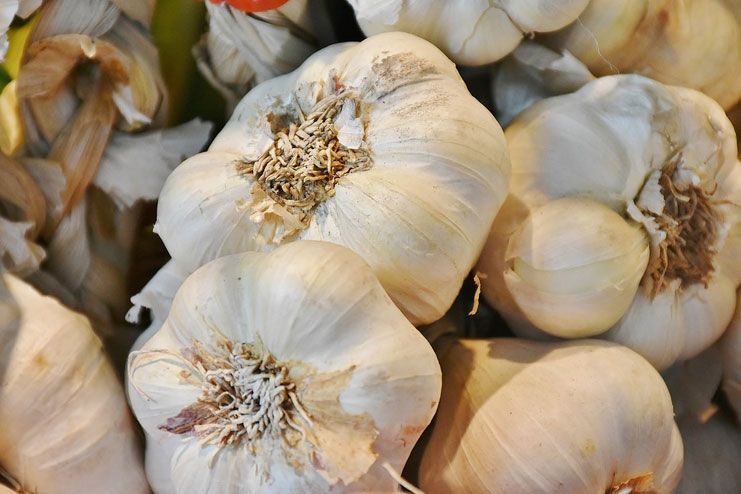
How To Use:
- Wash and cut garlic. Gently rub it over the affected skin area.
- Repeat 2 or 3 times in a day.
- Consumption of the fresh garlic pieces also helps.
6. Ginger For Cystic Acne:
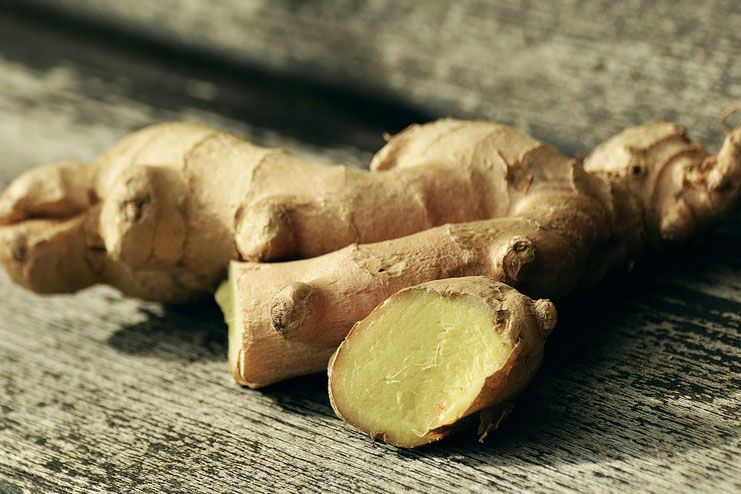
How To Use:
- Consume ginger regularly to show a positive effect on cystic acne.
- It can also be mixed with other natural ingredients and consumed to maintain skin health.
- Consume ginger in the form of bread, tea, snaps, cookies, etc or add it to soups, curries, salads, etc.
7. Green Tea Cystic Acne:
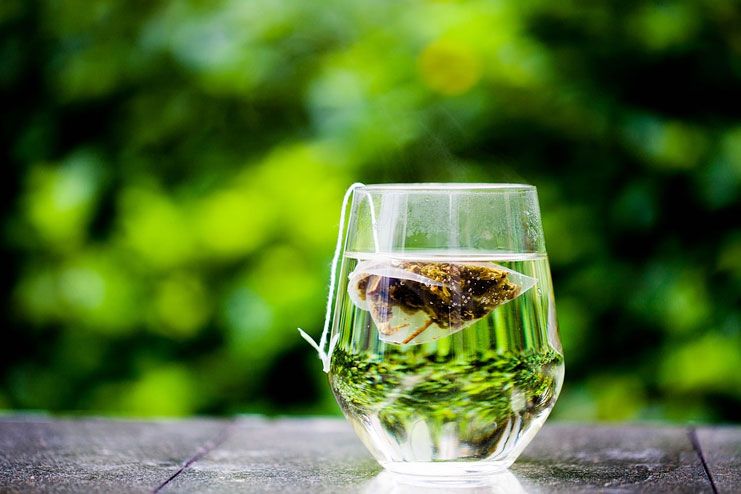
8. Turmeric For Cystic Acne:
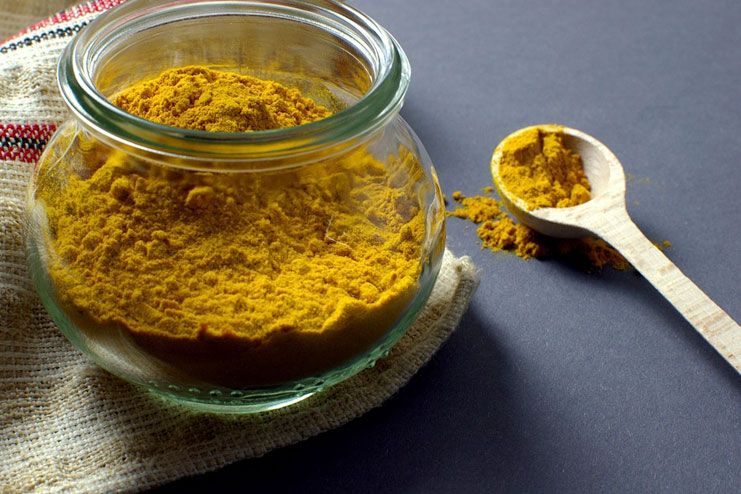
How To Use:
- Make smooth turmeric paste by adding some water.
- Apply the paste onto the affected skin areas and leave for about 5 minutes.
9. Epsom Salt For Cystic Acne:
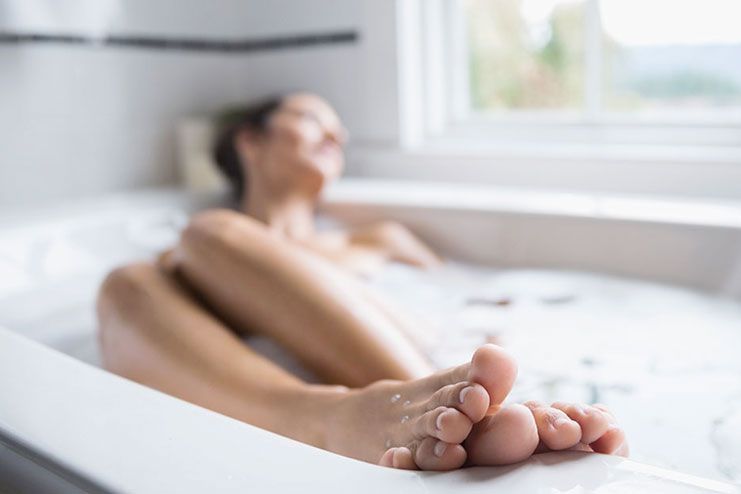

Plain Epsom salt can be directly applied on to the skin or mixed with water and applied to treat acne, blackheads, cystic acne, etc. Epsom can help unclog the pores and reduce inflammation
How To Use:
- Mix 2tsp Epsom salt in a cup of lukewarm water and mix well.
- Apply the paste on to the acne affected skin area using cotton.
- Leave for 5 minutes to dry and rinse thoroughly using warm water.
- Repeat thrice a day until you get thorough relief.
Alternatively,
- Add 2 cups epsom salt in your bathtub and run warm water.
- Soak yourself in the bathtub with warm water for 20 minutes.
- Rinse off thoroughly with plain water shower.
- Repeat thrice a week.
10. Potato For Cystic Acne:
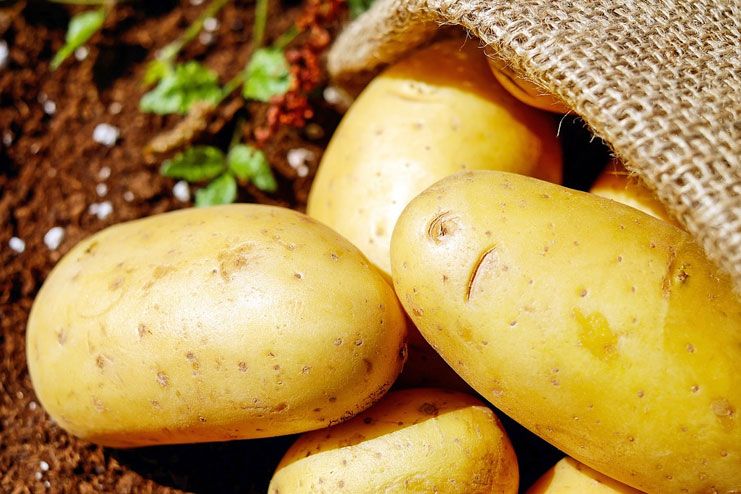
How To Use:
- Wash, peel and cut potatoes.
- Add the chopped pieces into the blender and make a paste.
- Apply the paste directly onto the skin affected with cystic acne and leave for 10 minutes.
- Rinse thoroughly and pat dry.
- Repeat 2 times a day.
11. Ice For Cystic Acne:
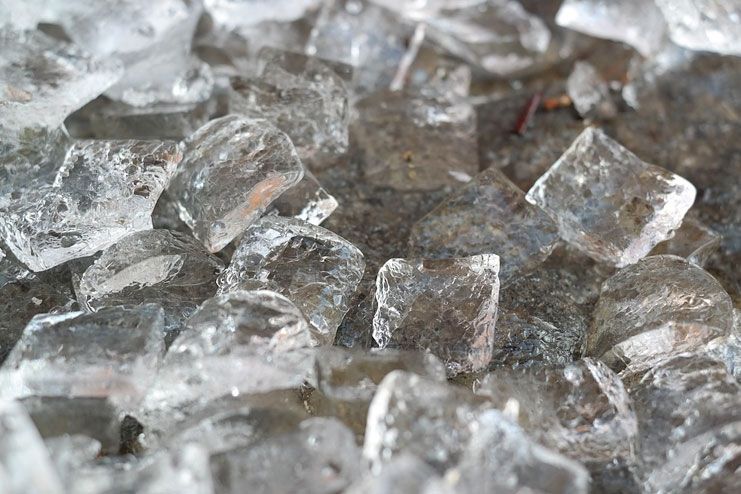
How To Use:
- Apply ice cubes directly on the skin affected with cystic acne for a few seconds.
- It helps constrict the blood vessels that are feeding the painful cyst.
- Thus, the size and the redness of the cyst decrease immediately.
12. Lemon For Cystic Acne:
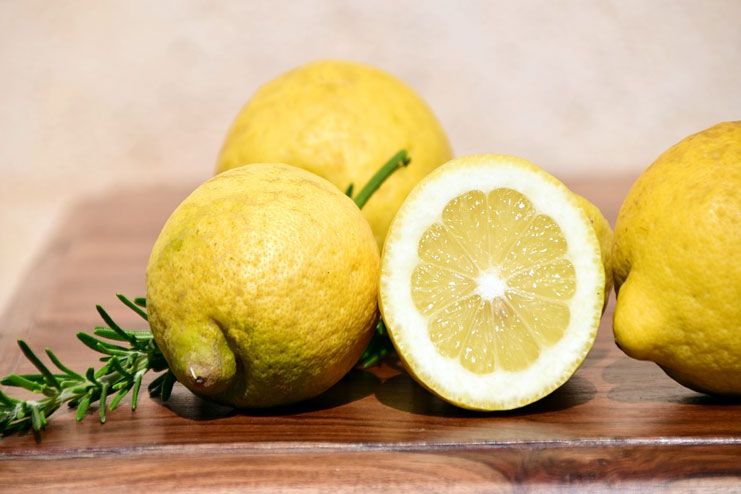
How To Use:
- Cut a lemon and squeeze a piece to extract the juice.
- Apply a little lemon juice on the affected area and leave for 10 mins.
- Rinse thoroughly with lukewarm water.
13. Benzoyl Peroxide For Cystic Acne:
Benzoyl peroxide works as a great antibacterial agent and help treat cystic acne. However, it should not be used generously.
How To Use:
- Use a good face wash containing 5% to 10% benzoyl peroxide.
- Do not overuse the same.
14. Salicylic Acid For Cystic Acne:
Glycolic acid and salicylic acid are used as cleansers and treatment pad. They are followed with benzoyl peroxide lotion.
Facial Mask For Cystic Acne Treatment
15. Egg White Mask For Cystic Acne:
Many natural face masks can be prepared and used to treat cystic acne. One such mask is egg white mask, which is a great source of enzymes and lysozyme that can kill bacteria. It helps with skin tightening and deep cleansing. The drying effect removes the excess oil out of the skin.
How To Use:
- Take egg white in a bowl, add 1tsp milk and ½ tsp honey.
- Mix well and apply it on the face as a mask.
- Leave for 30 minutes and rinse off with lukewarm water.
- Repeat twice a day.
16. Clay Mask For Cystic Acne:
Clay mask can also work a good face mask. It’s absorbent, exfoliating and astringent properties help draw excess sebum, open skin pores, eliminate dead cells and cleanse the affected areas.
How To Use:
- Add 2 tbsp clay to enough water. Mix to form paste and add ½ tsp honey, 2 drops tea tree oil.
- Apply the mixture on to the neck and the face and allow it to dry for 20 minutes.
- Wipe with clean wet cloth to remove the mask.
- Rinse off with normal water and pat dry.
- Apply moisturizer and repeat the process once a week.
17. Honey Mask For Cystic Acne:
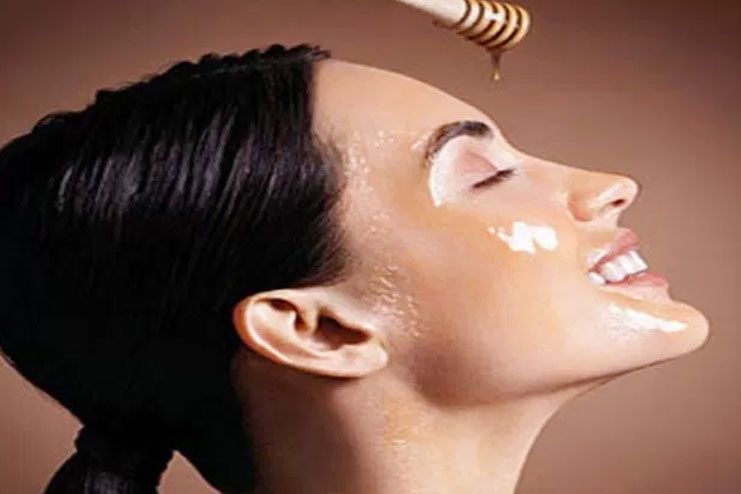

Honey has antibacterial and antioxidant properties that fight against the bacterial and free radicals attack on the skin and thus prevents the damage caused to the skin. It has an anti-inflammatory property that soothes the redness, irritation and discomfort caused by acne cysts (7).
How To Use:
- Dab some raw organic cotton on the skin affected with cystic acne with a cotton ball.
- Leave for 10 minutes and wash off with warm water.
- Pat dry the skin. Repeat twice a day for a few days.
Alternatively,
- Mix 1tsp cinnamon powder in 1/2tsp organic honey into paste.
- Apply on the affected areas and wash with warm water after 10 minutes.
18. Aspirin Mask For Cystic Acne:
Aspirin mask also helps heal cystic acne.
How To Use:
- Crush aspirin tablets using pestle and mortar and mix the powder with warm water.
- Apply aspirin paste on the affected area and leave on skin for 10 minutes
- Repeat daily for a week.
Essential Oils For Cystic Acne:
Essential oils help big time in fighting cystic acne. The best method of using the essential oils is to apply a few drops over the affected skin areas.
- Tea tree oil and lavender oil can be applied directly over the skin with cystic acne.
- These oils can also be used in combination with carrier oils like coconut or jojoba oil for those with sensitive skin.
- Avoid exposure to skin when treating with essential oils as UV rays may make the skin even more sensitive and leads to skin redness and irritation.
19. Tea Tree Oil For Cystic Acne:
Tea tree oil is naturally antimicrobial and antibacterial and thus, can reduce cystic acne breakouts. As per a scientific review, acne treatment with tea tree oil effectively reduces number of lesions in patients and has much tolerability.
20. Coconut Oil For Cystic Acne:
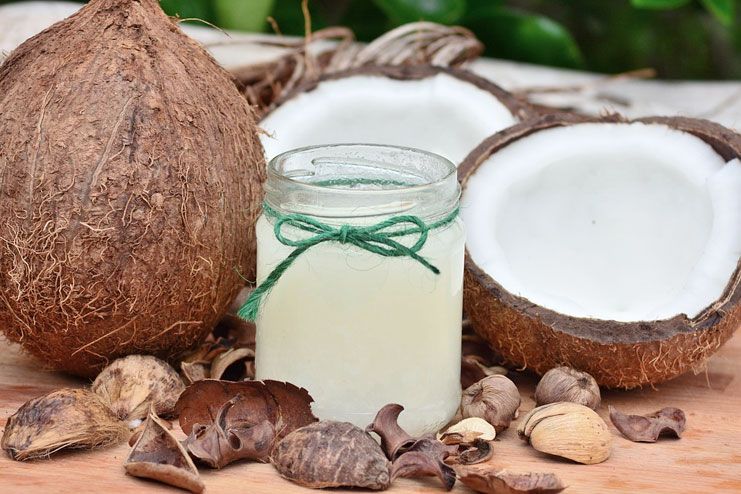
21. Castor Oil For Cystic Acne:
Castor oil has to be applied with oil facial steam. It will not block or clog the pores.
How To Use:
- Apply a little castor oil on the skin and massage gently with fingers.
- After 5 minutes, lean over a container with boiling water to take steam.
- After 5 minutes wipe off the face with a clean towel. Repeat once every day.
22. Clove Oil For Cystic Acne:
Oil extracted from the cloves can fight pimples. However, it may not suit every skin type. Talk to your doctor before using it on your skin.
23. Grape Seed Oil For Cystic Acne:
More research is needed on applying grapeseed oil for cystic acne even though many use this oil as a home remedy to treat cystic acne. Consult your dermatologist before using the same on the face.
24. Lavender Oil For Cystic Acne:
Lavender oil is known for its antioxidant and antimicrobial characteristics. It nourishes and soothes the skin and helps dealing dry skin, treating acne, and reducing dark spots. Thus, the oil promotes overall skin health, making it radiant.
25. Neem Oil For Cystic Acne:
This Ayurveda oil can treat several skin problems including cystic acne. It purifies blood and detoxifies the entire system.
How To Use:
- Collect neem leaves, wash them and boil in water for 56 minutes.
- After cooling, strain the water and drink it to get relief from the cystic acne.
- Regular intake helps kill bacterial infection.
Can We Prevent Cystic Acne?
Simple care and measures can help keep your skin free of cystic acne i.e. underground pimples. They include:
- Regular Cleansing: Deep-cleaning wash or salicylic acid use two times a day help clear skin debris as well as oily pores. Topical treatment with the over-the-counter creams help with pimple-fighting ingredients like benzoyl peroxide. See a dermatologist for stronger topical prescriptions.
- Skin-Clearing Diet: A healthy diet can help in many ways, especially in keep the body and skin healthy. The nutrients and the vitamins from the diet keep the hormone levels under control. For example, Vitamin B6 in whole-grain cereal and banana and beta-carotene offer smoother texture. Wear sunscreen every day.
- Birth Control Pills: Certain types of birth control pills help regulate breakout causing hormones and may improve the acne condition. Consult your doctor to choose the one that best suits you.
- Use “non comedogenic” and “oil-free” makeup products. Do not go to bed with makeup on.
- Identify and reduce stress linked to acne breakouts. Avoid foods with high glycemic levels like white breads, pastas, and rice, sugary treats, etc.
Many times, acne cysts are stubborn and may require the dermatologist’s help to clear up. And sometimes, the cystic acne may also cause significant scarring. Basic skin care measures are essential to avoid the possibility of cystic acne cases.



























